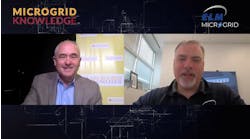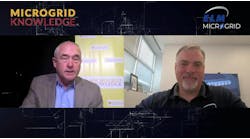Mike Byrnes, senior vice president of Veolia North America, wishes his customers had a better grasp of the statistics related to utility rate structures. He notes that defining utility rate structures is very difficult because they vary across the country and in every utility area. But understanding how your utility rates are structured is key to realizing the value of a microgrid. According to Byrnes, “Most people don’t understand the difference between their variable and their demand, and how different that is when you go to a microgrid.”
The aging grid infrastructure is one of the energy statistics that is top of mind for Jim Fonger, Canadian vice president at Ameresco. He cites a Department of Energy statistic that says 70% of the utility grid transmission lines and transformers are more than 25 years old, while large-scale generation plants are more than 30 years old. He explains that microgrids are “a much more efficient way of upgrading that infrastructure and providing greater control in terms of how it’s used.”
Tom Poteet, vice president of corporate development for Mesa Solutions, wraps up the discussion on statistics by sharing thoughts on internal rates of return. “I think it’s important for people to really understand the economics,” Poteet says. “What’s this going to cost me, what’s it going to gain me and over what time period?
“The thinking that got us here can’t be the thinking that’s going to solve the problem that we’re in. Putting more of the same architecture in place is not the solution to a changing energy infrastructure.” — Jim Fonger, Ameresco
The video concludes with an enlightening discussion about what it’s going to take to ensure grid reliability. Byrnes does not envision the grid ever going away because “even if we build microgrids everywhere, we still need to interconnect them because a stand-alone microgrid is exceptionally expensive and inefficient. Connected with others it makes sense.”
Fonger agrees and notes that creating grid reliability will require a new way of thinking. He says, “The thinking that got us here can’t be the thinking that’s going to solve the problem that we’re in. Putting more of the same architecture in place is not the solution to a changing energy infrastructure.” Poteet notes that “electric reliability happens pretty close” to things like transmission lines. No matter how smart the grid becomes, the efforts around reliability must also happen at the local level.
Watch the entire Microgrid Talk video here, and look for more interviews with microgrid experts in the Microgrid Knowledge Video Library.










